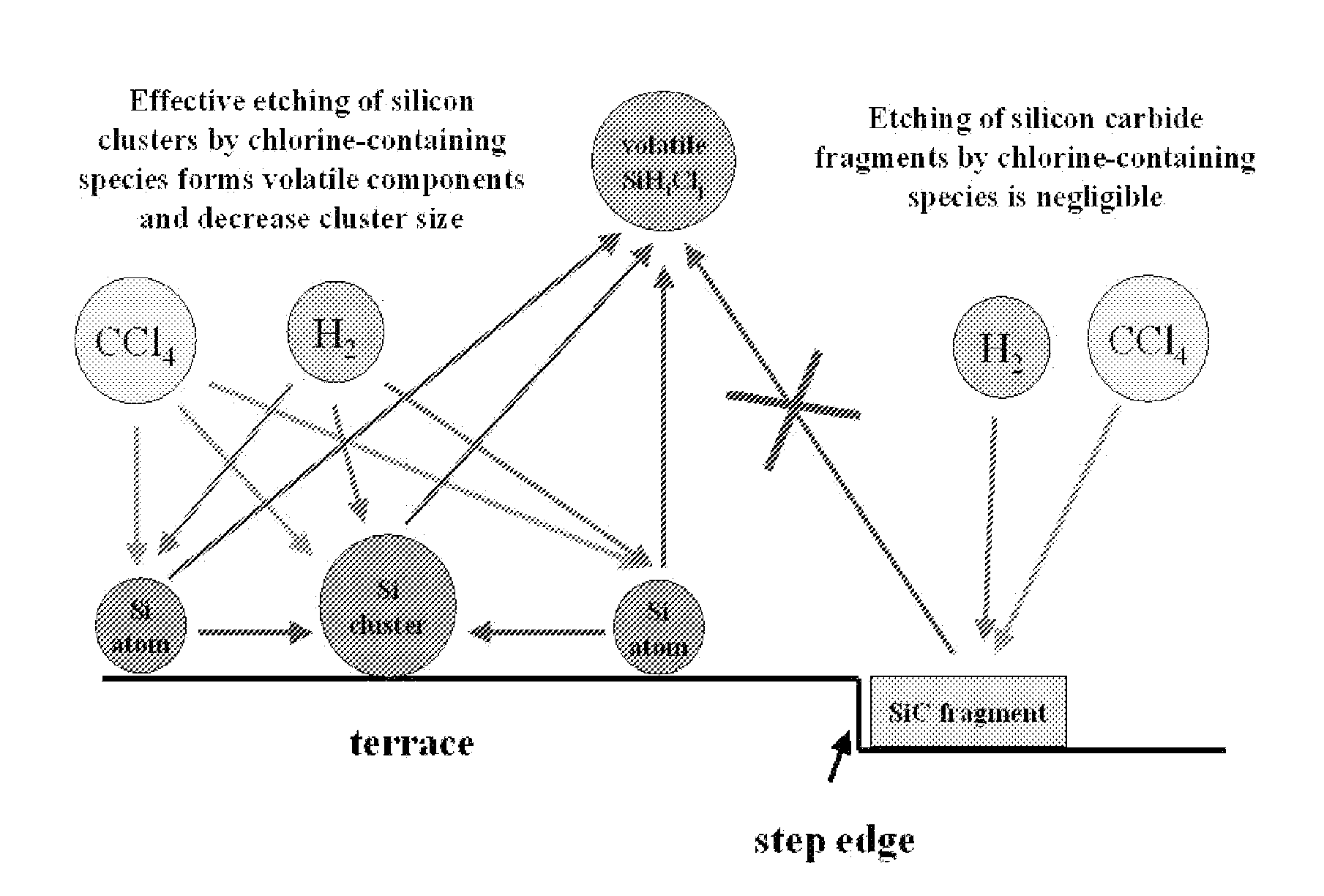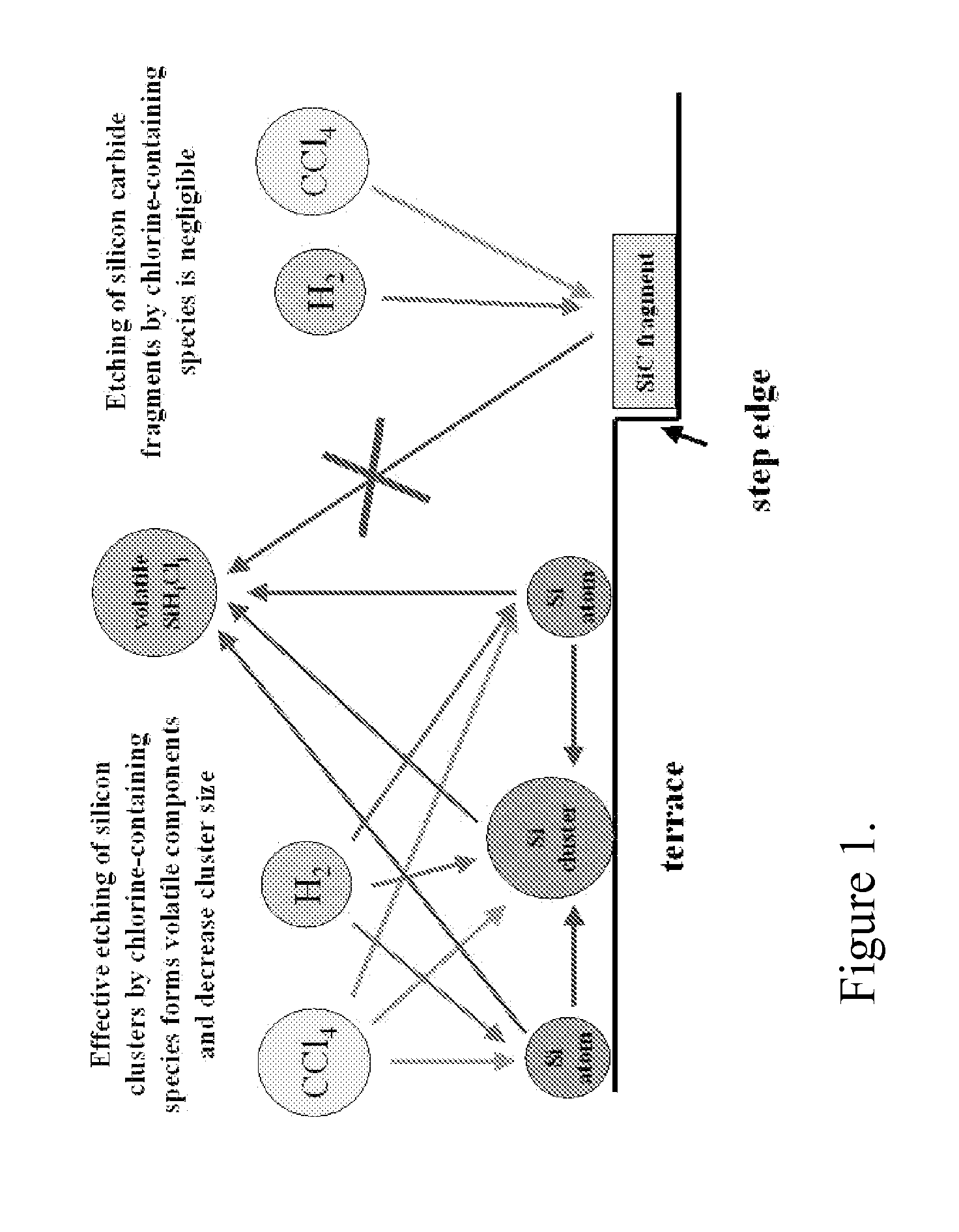METHOD, SYSTEM, AND APPARATUS FOR THE GROWTH OF ON-AXIS SiC AND SIMILAR SEMICONDUCTOR MATERIALS
a technology of silicon carbide and growth method, applied in the field of semiconductor materials, can solve the problems of high cost, high cost, and inability to meet the requirements of sic-based structures of the required high quality, and achieve the effect of improving material quality and reducing supersaturation
- Summary
- Abstract
- Description
- Claims
- Application Information
AI Technical Summary
Benefits of technology
Problems solved by technology
Method used
Image
Examples
Embodiment Construction
[0026]Chlorine addition provides two mechanisms for promotion of “on-axis” growth. First, chlorine provides an additional removal mechanism for silicon clusters. FIG. 1 illustrates the scheme of such a mechanism. The etching rate for silicon clusters is much higher than that for silicon carbide fragments, formed at the step edges. Effective etching of silicon clusters by chlorine-containing species forms volatile components and decreases average cluster size. So, one can expect that silicon clusters will be maintained below the critical size, for the following silicon-to-carbon and silicon-to-chlorine ratios:
x(int)(Si) / x(int)(C)=0.7−1.3,
x(int)(Si) / x(int)(Cl)=0.03−1,
[0027]where x(int)(Si), x(int)(C), x(int)(Cl) are the numbers of silicon, carbon, and chlorine atoms in the input gas mixture, respectively. As a result, cubic SiC growth will be suppressed on on-axis wafers, while polytype replication will be the dominant growth process. Thus, high quality SiC growth on the on-axis wafer...
PUM
| Property | Measurement | Unit |
|---|---|---|
| Angle | aaaaa | aaaaa |
| Angle | aaaaa | aaaaa |
| Temperature | aaaaa | aaaaa |
Abstract
Description
Claims
Application Information
 Login to View More
Login to View More - R&D
- Intellectual Property
- Life Sciences
- Materials
- Tech Scout
- Unparalleled Data Quality
- Higher Quality Content
- 60% Fewer Hallucinations
Browse by: Latest US Patents, China's latest patents, Technical Efficacy Thesaurus, Application Domain, Technology Topic, Popular Technical Reports.
© 2025 PatSnap. All rights reserved.Legal|Privacy policy|Modern Slavery Act Transparency Statement|Sitemap|About US| Contact US: help@patsnap.com



